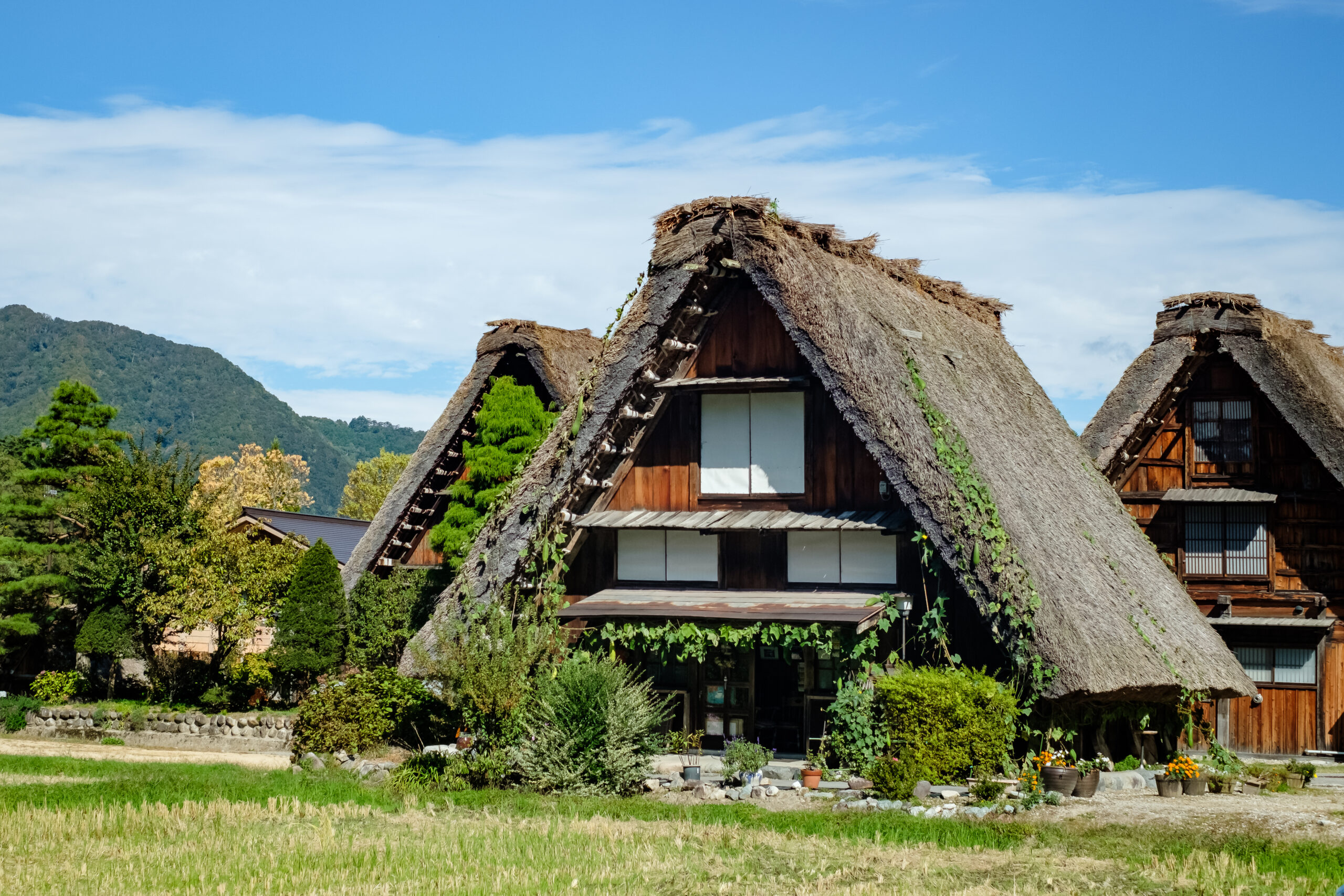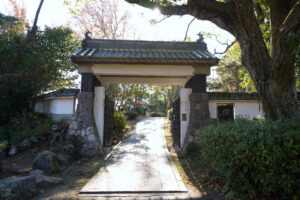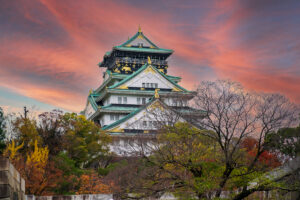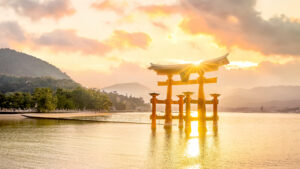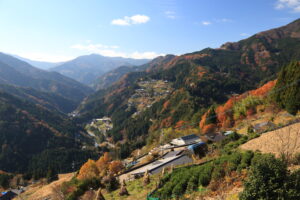Nestled in the mountainous region of Gifu Prefecture, Shirakawa-go is a picturesque village that offers a glimpse into Japan’s rich cultural heritage. Famous for its traditional gassho-zukuri farmhouses, this UNESCO World Heritage site attracts visitors from around the globe. As you wander through the enchanting streets, surrounded by charming wooden structures and breathtaking landscapes, it’s easy to see why Shirakawa is considered a timeless treasure of Japan. This article explores the history, architecture, and cultural significance of Shirakawa, offering insights into what makes this village a must-visit destination.
1. Discovering Shirakawa: Japan’s Timeless Treasure
Shirakawa-go is located in the remote mountains of Gifu Prefecture, accessible only through winding roads that lead through lush valleys and towering peaks. The village is famous for its serene setting and well-preserved traditional architecture, attracting thousands of tourists each year. Visitors often find that the atmosphere is imbued with a sense of tranquility, allowing them to step back in time and experience the Japan of yesteryear.
The area is best known for its thatched-roof farmhouses, which are designed to withstand the heavy snowfalls typical of the region. These structures have become synonymous with Shirakawa-go, captivating the imagination of many who yearn to connect with Japan’s rural past. The village offers an authentic glimpse into the lifestyle and customs of the local people, making it a significant part of Japan’s cultural landscape.
Beyond the architectural marvels, the surrounding natural beauty enhances the allure of Shirakawa. With rivers, rice paddies, and mountains enveloping the village, the stunning landscape changes with the seasons, providing breathtaking views year-round. Whether it’s the vibrant hues of autumn or the serene beauty of winter, each visit reveals a new facet of this hidden gem.
Furthermore, Shirakawa-go remains a living community where traditions are still practiced and cherished. The local residents take pride in maintaining their cultural heritage, offering visitors a unique opportunity to learn about age-old customs and crafts. This commitment to preserving their way of life adds depth and authenticity to the experience.
As a testament to its incredible charm, Shirakawa-go has garnered numerous accolades, including recognition from travel publications and organizations. The village’s blend of natural beauty, cultural richness, and historical significance continues to draw people in, ensuring its place as one of Japan’s most treasured destinations.
The journey to discover Shirakawa is not only about the destination but also about the experiences and connections made along the way. Each visit offers a new perspective, inviting visitors to engage with the local community, appreciate the landscape, and immerse themselves in the unique heritage that defines this timeless treasure.
2. The Rich History Behind Shirakawa’s Traditional Houses
The history of Shirakawa-go is deeply intertwined with the traditional gassho-zukuri houses that dot the landscape. These iconic structures were built from the late Edo period (1603-1868) to the early Meiji period (1868-1912) as a response to the harsh winters and heavy snowfall that characterize the region. The term "gassho-zukuri," which translates to "constructed like hands in prayer," reflects the steeply pitched roofs designed to shed snow and protect against the elements.
The earliest records indicate that the area was inhabited by farmers and craftsmen who relied on the land for their livelihoods. Over the centuries, the community developed its unique architectural style, incorporating local materials such as wood and straw, which were abundant in the region. This adaptability and resourcefulness allowed the village to thrive despite the challenging climatic conditions.
As time progressed, these houses became more than mere shelters; they evolved into symbols of the community’s resilience and craftsmanship. Local families passed down the techniques of gassho-zukuri construction through generations, ensuring that the knowledge and skills required to maintain these structures would not be lost. This rich history is evident in the meticulous craftsmanship and attention to detail found in each farmhouse.
The village’s historical significance is amplified by its role as a center for silk production during the Edo period. Many families engaged in sericulture, cultivating silkworms and producing silk that was sold in nearby markets. This economic activity contributed to the community’s growth and prosperity, further embedding the village into Japan’s larger historical narrative.
In recent years, efforts have been made to preserve the rich history of Shirakawa-go and its traditional houses. Restoration projects funded by local and national governments have helped maintain these architectural landmarks, ensuring that future generations can appreciate their historical value. The villagers’ commitment to preserving their heritage is evident in the careful upkeep of their homes and community spaces.
Shirakawa-go serves as a living history lesson, inviting visitors to explore the stories behind its iconic houses. By walking through the village, one can better understand the daily lives of those who lived there, gaining a deeper appreciation for the traditions and customs that have shaped this unique corner of Japan.
3. Unveiling Shirakawa’s UNESCO World Heritage Status
In 1995, Shirakawa-go was designated a UNESCO World Heritage Site, recognizing its cultural significance and outstanding universal value. This designation has not only elevated the village’s global profile but has also underscored the importance of preserving and promoting its unique heritage. The inclusion in UNESCO’s prestigious list helped draw international attention to the village, ushering in an influx of tourism and interest in its traditional culture.
UNESCO’s recognition is based on the extraordinary architecture of the gassho-zukuri houses, which exemplify a harmonious relationship between human habitation and the natural environment. These structures are a testament to the ingenuity of the local inhabitants, designed to withstand heavy snowfall while providing warmth and shelter to families for centuries. This balance of architectural design and environmental adaptation is a key component of Shirakawa-go’s designation as a World Heritage Site.
Furthermore, the village’s preservation efforts have been closely monitored by UNESCO, ensuring that the integrity of the site is maintained as tourism continues to grow. The local government and community have implemented measures to safeguard the area, such as limiting the construction of new buildings and promoting sustainable tourism practices. These initiatives reflect a commitment to preserving Shirakawa-go as both a historical site and a living community.
The World Heritage status has also sparked interest in cultural exchange and education. Various programs and workshops have been established to share the village’s traditions with visitors, creating opportunities for meaningful interactions between locals and travelers. This fosters a greater understanding of the cultural significance of Shirakawa-go and encourages appreciation for its unique way of life.
Moreover, the international recognition has inspired other rural communities in Japan to preserve their cultural heritage, leading to a broader movement aimed at safeguarding traditional practices and lifestyles. Shirakawa-go stands as a model for how heritage sites can be effectively managed and preserved while still remaining vibrant and relevant in the modern world.
As a UNESCO World Heritage Site, Shirakawa-go encapsulates the essence of Japan’s cultural legacy, inviting visitors to immerse themselves in its history and traditions. The village’s recognition serves as a reminder of the importance of preserving our shared human heritage for future generations.
4. The Unique Architectural Style of Gassho-Zukuri
The architectural style of Shirakawa-go is epitomized by the gassho-zukuri houses, which are distinguished by their steeply pitched thatched roofs. This design is not only visually striking but also functional, allowing the heavy snow that falls during the winter months to slide off easily. The roofs, often reaching angles of up to 60 degrees, are constructed using rice straw, which provides excellent insulation and durability.
The gassho-zukuri style reflects a deep understanding of the local climate and environment. The design elements are tailored to the region’s specific needs, showcasing the ingenuity of the builders. The use of natural materials sourced from the surrounding landscape further strengthens the connection between the houses and their natural surroundings, creating a seamless integration of architecture and nature.
Inside the gassho-zukuri houses, visitors will find open, spacious layouts that foster community living. The central hearth serves as the heart of the home, where families gather for warmth and cooking. This communal aspect of living is a fundamental element of Shirakawa-go’s cultural identity, emphasizing the importance of family and social bonds in daily life.
The gassho-zukuri houses also feature unique construction techniques, including a wooden framework that allows for flexibility and strength. This craftsmanship has been passed down through generations, with each house embodying the skill and artistry of its builders. The dedication to maintaining these traditional methods is evident in the enduring quality of the structures, some of which have stood for over 250 years.
Heritage preservation has become a focal point for the community, with local artisans continuing to employ these age-old construction techniques. Workshops and demonstrations provide insights into the building process, allowing visitors to appreciate the craftsmanship that goes into each gassho-zukuri house. This hands-on experience deepens the understanding of the architectural style and its significance to the village’s heritage.
The gassho-zukuri houses of Shirakawa-go are more than just buildings; they are cultural symbols that represent the resilience and ingenuity of the local community. Their unique design and historical significance continue to captivate visitors, offering a deeper connection to the traditions and lifestyle of Japan’s rural past.
5. Seasonal Beauty: Shirakawa Through the Year
Shirakawa-go transforms dramatically with the changing seasons, each bringing its own unique charm to the village. In spring, the landscape bursts into life with cherry blossoms and vibrant greenery, drawing visitors who seek to experience the beauty of nature’s rebirth. The gentle climate during this season allows travelers to explore the village’s picturesque streets and enjoy outdoor activities, such as hiking and photography.
As summer approaches, Shirakawa-go becomes a lush paradise, with verdant rice paddies reflecting the azure sky. The warm weather invites cultural festivals and community events, showcasing the vibrant traditions of the region. Visitors can participate in local activities, such as traditional crafts and agricultural practices, immersing themselves in the daily life of the villagers.
Autumn brings a breathtaking transformation as the foliage begins to change colors, painting the landscape in hues of red, orange, and gold. The contrast of the colorful leaves against the backdrop of the gassho-zukuri houses creates a stunning visual tapestry that attracts many photographers and nature enthusiasts. The cooler temperatures make it an ideal time for hiking, as trails offer panoramic views of the surrounding mountains.
With the arrival of winter, Shirakawa-go is enveloped in a blanket of snow, turning the village into a fairytale wonderland. The thatched roofs of the gassho-zukuri houses, dusted with snow, create a magical atmosphere that enchants visitors. The winter months offer unique experiences, such as snowshoeing and traditional winter festivities, allowing travelers to engage with the local culture in a seasonal context.
The seasonal beauty of Shirakawa-go is further highlighted during the evenings when the village illuminates its houses and streets. Special events, such as the winter illumination festivals, showcase the enchanting beauty of the village, inviting visitors to witness the harmony of architecture and nature under the night sky.
Shirakawa-go’s four distinct seasons provide a dynamic backdrop for exploration and discovery. Each season offers its own unique experiences, ensuring that visitors can appreciate the village’s beauty and cultural richness throughout the year. This ever-changing landscape invites travelers to return time and time again, each visit revealing new wonders to behold.
6. Exploring the Cultural Significance of Local Festivals
Local festivals in Shirakawa-go play a vital role in preserving and celebrating the village’s cultural heritage. These events provide a platform for the community to come together and showcase traditional customs, art forms, and local cuisine. One of the most notable festivals is the Shirakawa-go Takayama Matsuri, held twice a year in spring and autumn. This vibrant celebration features elaborate floats adorned with intricate designs, reflecting the artistic craftsmanship of the region.
During the Takayama Matsuri, visitors can witness traditional performances, including music, dance, and theatrical acts, that have been passed down through generations. The sense of community and shared history comes alive during these festivities, as locals don traditional attire and partake in age-old rituals. This vibrant atmosphere creates an immersive experience that allows visitors to connect with the culture of Shirakawa-go.
In addition to the Takayama Matsuri, other local festivals celebrate seasonal changes and agricultural practices. For instance, the rice planting festival, known as "taue," involves the community gathering to participate in the planting of rice seedlings. This event emphasizes the importance of agriculture to the village’s identity and provides an opportunity for visitors to engage in hands-on experiences.
The cultural significance of these festivals extends beyond mere entertainment; they serve as a reminder of the village’s traditions and values. The community’s commitment to preserving these practices reflects a deep connection to their history and a desire to pass on their heritage to future generations. In this way, the festivals are not only a celebration of the present but also a vital link to the past.
Furthermore, the festivals foster a sense of pride among the villagers, reinforcing their identity and community spirit. As visitors partake in these events, they gain insight into the customs and beliefs that shape the lives of the local people. The cultural exchange that occurs during these celebrations enriches the experience for both locals and tourists, creating lasting memories.
The local festivals of Shirakawa-go are a testament to the village’s vibrant cultural lineage and communal bonds. They invite visitors to immerse themselves in the traditions that have shaped the identity of this remarkable village, creating a tapestry of memories and experiences that resonate long after the festivities conclude.
7. A Journey Through Shirakawa: What to See and Do
Exploring Shirakawa-go is a delightful journey that offers a wealth of sights and activities for visitors. The village itself is a UNESCO World Heritage Site, and wandering through its streets allows travelers to immerse themselves in the beauty of the gassho-zukuri houses. Each house has its own unique story, and many are open to the public, allowing visitors to step inside and learn about the lifestyle of the villagers.
One of the must-visit locations in Shirakawa-go is the Wada House, one of the largest gassho-zukuri farmhouses in the village. This historical site provides a fascinating glimpse into the past, showcasing the traditional architecture and lifestyle. The house is equipped with various artifacts and displays that highlight the daily life of the residents, making it an essential stop for history enthusiasts.
For those seeking panoramic views of the village, a hike to the observation deck on the hilltop is highly recommended. The trek offers stunning vistas of Shirakawa-go and its surrounding mountains, especially during sunrise and sunset when the landscape is bathed in golden light. The view from the top is an unforgettable experience that captures the essence of this enchanting location.
In addition to sightseeing, visitors can engage in hands-on experiences that allow them to connect with the local culture. Workshops on traditional crafts, such as washi paper making or indigo dyeing, provide an opportunity to learn from skilled artisans. These interactive sessions foster appreciation for the craftsmanship and creativity that define Shirakawa-go.
The village also offers beautiful walking trails that meander through the rice paddies and forests, providing a serene escape into nature. The trails are particularly captivating during the changing seasons, allowing visitors to experience the diverse flora and fauna of the region. Birdwatching and photography are popular activities along these paths, as the scenery changes dramatically throughout the year.
Finally, no visit to Shirakawa-go would be complete without indulging in the local cuisine. Traditional dishes, often centered around locally sourced ingredients, showcase the flavors of the region. Restaurants and eateries in the village offer a range of options, from hearty soba noodles to savory grilled fish, allowing visitors to savor the culinary delicacies of Shirakawa-go.
Exploring Shirakawa-go is a multifaceted experience that encompasses history, culture, and natural beauty. With so much to see and do, the village offers an enriching journey that leaves visitors with lasting memories and a deeper appreciation for Japan’s rural heritage.
8. Gastronomic Delights: Local Cuisine of Shirakawa
The culinary scene in Shirakawa-go reflects the village’s agricultural roots and commitment to using fresh, locally sourced ingredients. One of the standout dishes is "Hida beef," a high-quality wagyu beef known for its marbling and tenderness. Many restaurants in the village serve this delectable beef in a variety of styles, including grilled, shabu-shabu, or as part of a traditional kaiseki meal. Visitors can savor the rich flavors of this premium beef while enjoying the rustic beauty of their surroundings.
Rice also plays a significant role in Shirakawa’s culinary offerings, as the region is known for its pristine rice paddies. Locally grown rice is often served as a staple alongside various dishes. The unique growing conditions, including pure spring water and fertile soil, contribute to the exceptional quality of the rice, making it a highlight of any meal in the village.
Another local specialty is "Shirakawa-go soba," a buckwheat noodle dish that is beloved among residents and visitors alike. The soba is typically served cold with a dipping sauce or hot in a flavorful broth. Many restaurants in the village take pride in making their soba from scratch, allowing diners to experience authentic flavors and textures that reflect the region’s culinary heritage.
In addition to savory dishes, Shirakawa-go offers a selection of traditional sweets and snacks. One popular treat is "washi-mochi," a rice cake made with glutinous rice and often filled with sweet red bean paste. This delightful confection is a favorite among locals and visitors, providing a taste of traditional Japanese sweets that perfectly complements the village’s ambiance.
Seasonal ingredients play a significant role in the local cuisine, with dishes often reflecting the changing bounty of the land. In spring, fresh vegetables and herbs are abundant, while autumn brings a harvest of mushrooms and chestnuts. This commitment to seasonal cooking not only enhances the flavors of the dishes but also promotes sustainability and connection to the land.
Dining in Shirakawa-go is not just about the food; it’s also about the experience. Many restaurants offer traditional tatami dining rooms where guests can enjoy their meals in a serene setting. The warm hospitality of the locals and the emphasis on communal dining create an inviting atmosphere that enhances the culinary journey.
The gastronomic delights of Shirakawa-go offer a tantalizing exploration of local flavors and ingredients. From savory dishes to sweet treats, the village’s cuisine reflects its cultural heritage and commitment to sustainability, making it an essential aspect of the overall Shirakawa experience.
9. Eco-Tourism: Balancing Heritage and Sustainability
As tourism in Shirakawa-go continues to grow, the village has taken proactive measures to promote eco-tourism and sustainability. The community recognizes the importance of preserving its cultural and natural heritage while accommodating the influx of visitors. This commitment is reflected in various initiatives aimed at minimizing environmental impact and fostering a sustainable tourism model.
One of the key strategies employed by Shirakawa-go is the promotion of low-impact travel options. Visitors are encouraged to explore the village on foot or by bicycle, allowing them to connect with the landscape and appreciate its beauty while reducing their carbon footprint. Walking paths and bike rentals are readily available, providing convenient access to the village’s attractions.
Moreover, local accommodations are increasingly adopting sustainable practices, such as using renewable energy sources and minimizing waste. Many guesthouses and traditional inns prioritize eco-friendly initiatives, including water conservation and the use of organic or locally sourced materials in their operations. This shift not only benefits the environment but also enhances the guest experience by promoting a deeper connection to the local community.
Cultural preservation is another crucial aspect of eco-tourism in Shirakawa-go. The village actively engages visitors in workshops and activities that highlight traditional crafts and agricultural practices. These experiences foster a sense of respect and appreciation for the local culture, encouraging travelers to embrace sustainable tourism practices and acknowledge the
